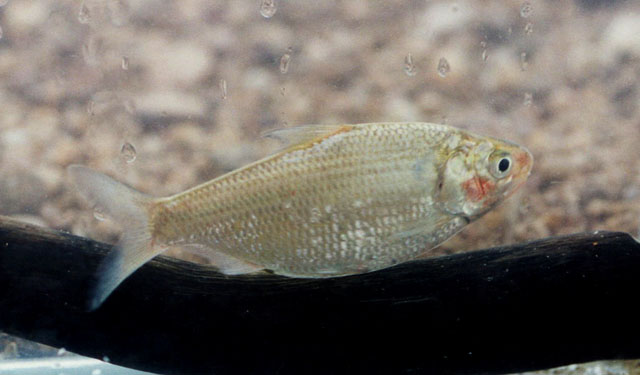| Dorosomatidae (Gizzard shads and sardinellas) |
| 48 cm SL (male/unsexed) |
|
pelagic; freshwater; brackish; depth range 0 - 3 m, potamodromous |
| Oceania and Asia: Rivers of Australia and southwestern Papua New Guinea (from Fortescue River near Dampier Archipelago in Western Australia, eastward in rivers through the Northern Territory and Queensland south to the Murray-Darling system; also the Finke River, affluent to Lake Eyre; Bensbach River (Ref. 6993) and Digoel River in New Guinea. |
|
Dorsal spines (total): 0-0; Anal spines: 0-0; Anal soft rays: 17-26. Belly with 14 to 18 (usually 16 to 17) - 11 to 14 (usually 12 or 13), total 25 to 31 (usually 20 to 30) scutes. Anterior arm of pre-operculum with fleshy triangular area above, not covered by third infra-orbital bone (see N. come). Edge of lower jaw strongly flared outward. Pectoral axillary scale rudimentary or absent. Hind edge of scales not toothed. A dark spot behind gill opening. |
| Occur often far up rivers, but also in estuaries and in Lakes Alexandrina and Albert near mouth of a river (Ref. 188). Most commonly inhabit streams coursing through relatively dry eucalyptus-scrub or desert areas, preferring sluggish or quiet waters (Ref. 5259, 44894). Also found in saline lakes (slightly less salty than sea water). Tolerant of water temperatures between 9° and 38°C and pH 4.8-8.6. Although these fish have a wide tolerance of temperature and pH, they are susceptible to oxygen depletion and are usually the first to perish when ephemeral habitats begin to dry up. Common length is 15-20 cm (Ref. 44894). Frequently noted in large shoals that feed on benthic algae; also feed on insects and small crustaceans. Spawning may occur repeatedly in the north with a peak during the wet season; probably annual in the south (Ref. 5259, 44894). |
|
Least Concern (LC); Date assessed: 14 February 2019 Ref. (130435)
|
| harmless |
|
Source and more info: www.fishbase.org. For personal, classroom, and other internal use only. Not for publication.

